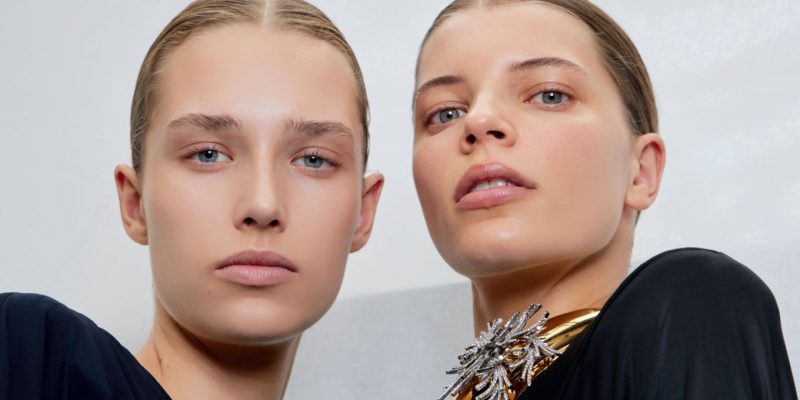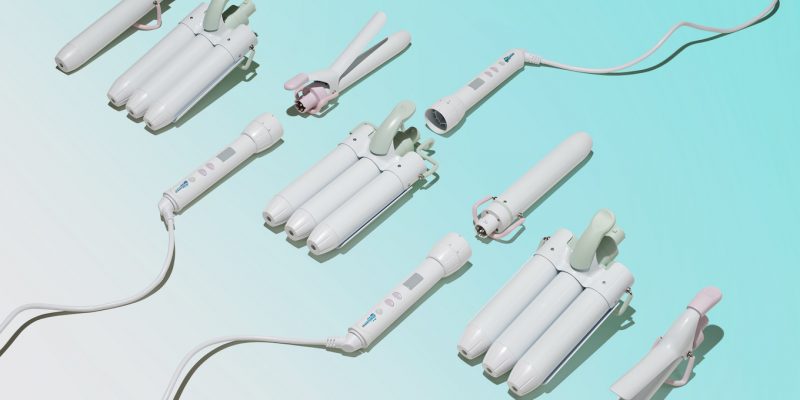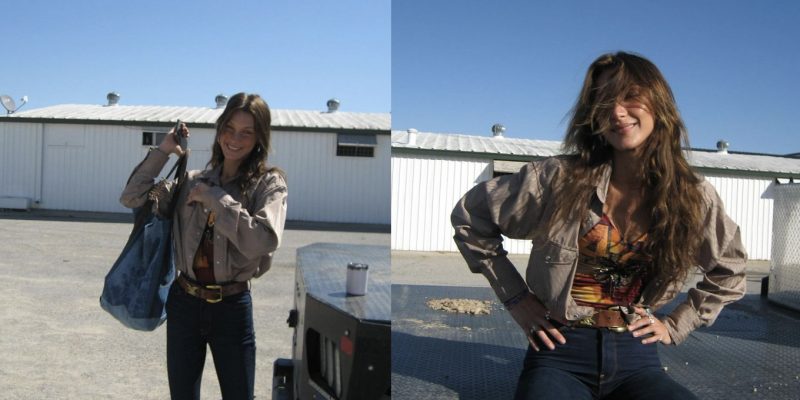Skincare
A Guide to the Clean Beauty Terms You Should Know
Does natural mean organic? Are parabens bad? Is cruelty-free the same as vegan? A starter guide to wading through the messy state of better-for-us beauty.
by : Ingrie Williams- Apr 24th, 2023

There’s no denying that the clean-beauty movement has produced some outstanding hits, but the fear-mongering messages and misinformation that overshadow the space remain a big miss. As we move into the era of amplifying science- driven voices, an important step toward clearing up confusion is seeking out trusted sources (see a few of our faves below) and getting the facts on some common ingredients and phrases that dominate the conversation.
CLEAN
Clean products are made without ingredients—whether naturally derived or synthetic—that a brand deems controversial and/or potentially harmful to one’s health. Clean-product offerings have expanded rapidly, and by 2028, Statista Research estimates that their global market value will be approximately $20 billion—a notable increase from almost $9 billion in 2021. Still, the term “clean” remains unregulated and is therefore subjective.
PARABENS
Parabens are synthetic preservatives that prevent the development and growth of bacteria, mould or fungus in personal-care products, keeping the formula stable and effective throughout its usage and shelf life. The ingredient, which commonly includes methylparaben, ethylparaben, propylparaben and butylparaben, has been called into question due to limited studies linking parabens to endocrine disruption and breast cancer. However, the Canadian Cancer Society states that the ingredient “has not been classified as a cancer-causing substance by any major scientific organization” and that “more research is needed to understand the association better.”
ALCOHOL
Within this large group of organic compounds, different varieties feature a range of attributes and benefits. Solvent alcohols (a.k.a. SD alcohol, isopropyl alcohol or denatured alcohol/alcohol denat) are low-molecular compounds that can contribute to a light product texture and evaporate quickly but can also be drying or irritating to the skin. Fatty alcohols (which appear on labels as cetyl, stearyl or cetearyl alcohol) are high-molecular compounds that create a thick product texture, like in a rich balm, and have emollient properties that can protect the skin barrier.
ALUMINUM
Aluminum is a non-magnetic metal that is the most abundant in the earth’s crust. Aluminum-based compounds are widely used in cosmetics, pharmaceuticals and over-the-counter drugs, such as antacids. In antiperspirants, aluminum salts form a gel-like plug that temporarily blocks pores to reduce the amount of sweat on the surface of the skin, and for several decades, there has been speculation and confusion as to whether the ingredient might be carcinogenic. The Mayo Clinic states that “there’s no conclusive evidence linking the use of underarm antiperspirants or deodorants with breast cancer.”
PETROLATUM
Also known as petroleum jelly, petrolatum is a by-product of crude- oil refining. The occlusive ingredient is often touted by dermatologists for its protective capability on dry, irritated or injured skin with minimal allergenic potential. In recent years, concerns over the manufacturing safety of unrefined petrolatum have risen due to reports of pollutants such as polycyclic aromatic hydrocarbons (PAHs) being potentially linked to cancer. However, to avoid potential health risks, only highly refined petrolatum is used in products sold in Canada, and our government has assessed it as not harmful to health at current levels of exposure.
SODIUM LAURETH (LAURYL) SULPHATE
A common surfactant in cleansing products such as shampoo, toothpaste and body wash, sodium laureth (lauryl) sulphate (SLS/SLES) helps bring the oil and water elements of a formula together. It’s also a foaming agent that creates bubbles and lather. While deemed safe in Canada, the U.S. and Europe when used as directed, it has been recognized to be irritating to skin (at high levels).
SILICONE
Derived from a natural compound, silicone can appear in several versions and perform an array of functions, from smoothing skin and hair to enhancing the spreadable quality of a formula. In 2021, 30 types of silicone-based polymers were assessed by an expert panel of the Cosmetic Ingredient Review as safe for use in cosmetics products.
ECOCERT AND B CORP CERTIFICATION
With an emphasis on environmentally friendly and socially conscious practices, both organizations aim to create a positive global economic impact by certifying companies that adhere to specific corporate standards in categories such as organic agriculture and impact on workers.
CRUELTY-FREE AND/OR VEGAN
“Cruelty-free” is defined as any product developed or produced without the use of inhumane testing on animals. A bunny logo, such as the one from Leaping Bunny or People for the Ethical Treatment of Animals (PETA), on the packaging of a beauty product indicates that the product meets the organization’s cruelty-free criteria and that the company has paid a fee for it to be certified. “Vegan” identifies that a product has been made without animal-derived ingredients and/or by-products, such as beeswax.
NATURAL
Did you know that Merriam-Webster Dictionary lists no fewer than 14 definitions for “natural” as an adjective? Another unregulated term that appears frequently on beauty labels, it is open to interpretation and can mean many different things when it comes to ingredients and formulations.
SUSTAINABLE PACKAGING
This all-encompassing yet ungoverned term can include packaging that is fully recyclable, contains recyclable elements, is made of post-consumer recycled (PCR) materials, is refillable or aims to be zero-waste with biodegradable or compostable design.
A clear view
A growing number of beauty brands are pulling back the curtain to share vital information with eco-conscious consumers.
CLARINS T.R.U.S.T.
The French beauty brand has created a platform designed to provide consumers with insight into the origin of ingredients, manufacturing processes, packaging and more. Called T.R.U.S.T., it is based on blockchain technology that shares key information about numerous skincare products and is accessible through a QR code or batch number.
PIERRE FABRE GREEN IMPACT INDEX
Using a simple score of A, B, C or D, this transparent measuring tool summarizes the impacts of Pierre Fabre products on society and the environment. Audited by AFNOR, an internationally recognized independent certification body, the index assesses a range of criteria, such as biodegradability, carbon footprint and organic farming, and is easily accessible on each of the company’s brand websites, including klorane.com and eau-thermale-avene.ca.
THE MORE YOU KNOW
Follow these cosmetics chemists for science-backed beauty info: Esther Olu (@themelaninchemist)
Dr. Michelle Wong (@labmuffinbeautyscience)
Jen Novakovich (@theecowell)
Read more:
10 Ethical Beauty and Skincare Staples to Add to Your Routine
7 Ways to Make Your Beauty Routine More Sustainable
What Is A “Clean” Fragrance?
Newsletter
Join our mailing list for the latest and biggest in fashion trends, beauty, culture and celebrity.
Read Next

Fashion
Tap Into the Tenniscore Aesthetic With These Stylish Pieces
Game, set, match!
by : Lauren Knowles- Apr 23rd, 2024

Fashion
Reitmans and The Birds Papaya Just Dropped The Dreamiest Spring Collection
Welcome to Sarah's Playhouse.
by : Melissa Fejtek- Apr 22nd, 2024

Beauty
Tested and Approved: A Skin Saviour That Works While You Sleep
Wake up with your glowiest skin yet—even if you didn’t clock eight hours.
by : ELLE Canada- Apr 11th, 2024




